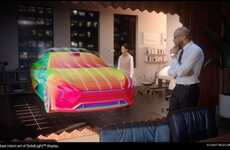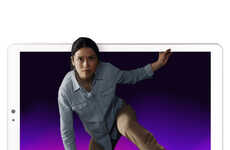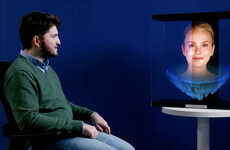
The Looking Glass Gen2 Can Transform Photos into 3D Images
Niko Pajkovic — March 3, 2022 — Tech
References: lookingglassfactory & electronicsforu
Last year, Looking Glass, a New York-based company specializing in holographic technology, unveiled its second-generation 3D holographic displays dubbed the Looking Glass Gen2 and the 8K Gen2. Both products are powered by the brand's advanced light-field technology, which is able to produce "free-floating" 3D holograms. The new devices can be used to convert digital photos taken with a smartphone into 3D images or videos.
However, it is worth noting that the new products do not deliver a technology upgrade from the original models. Instead, they provide upgrades in overall size and quality. For example, the Portrait version now boasts a 7.9-inch display, while the 8K model is 32 inches. In addition, the new displays are thinner and lighter than the previous models and utilize new materials that reduce ambient reflections.
Image Credit: Looking Glass
However, it is worth noting that the new products do not deliver a technology upgrade from the original models. Instead, they provide upgrades in overall size and quality. For example, the Portrait version now boasts a 7.9-inch display, while the 8K model is 32 inches. In addition, the new displays are thinner and lighter than the previous models and utilize new materials that reduce ambient reflections.
Image Credit: Looking Glass
Trend Themes
1. Holographic Advertising - Using free-floating holographic displays for innovative advertising campaigns.
2. 3D Visualization - The use of holographic displays for interactive 3D visualization in industries such as architecture and design.
3. Virtual Conferences - The integration of free-floating holographic displays in virtual conferences for enhanced attendee engagement.
Industry Implications
1. Retail - Using holographic displays to showcase products in an interactive and innovative way, disrupting traditional in-store displays.
2. Entertainment - Using free-floating holographic displays to create immersive experiences in amusement parks, theaters, and concerts.
3. Medical - Utilizing holographic displays for medical visualization and education, revolutionizing the way medical students learn and doctors perform surgeries.
5.5
Score
Popularity
Activity
Freshness
















